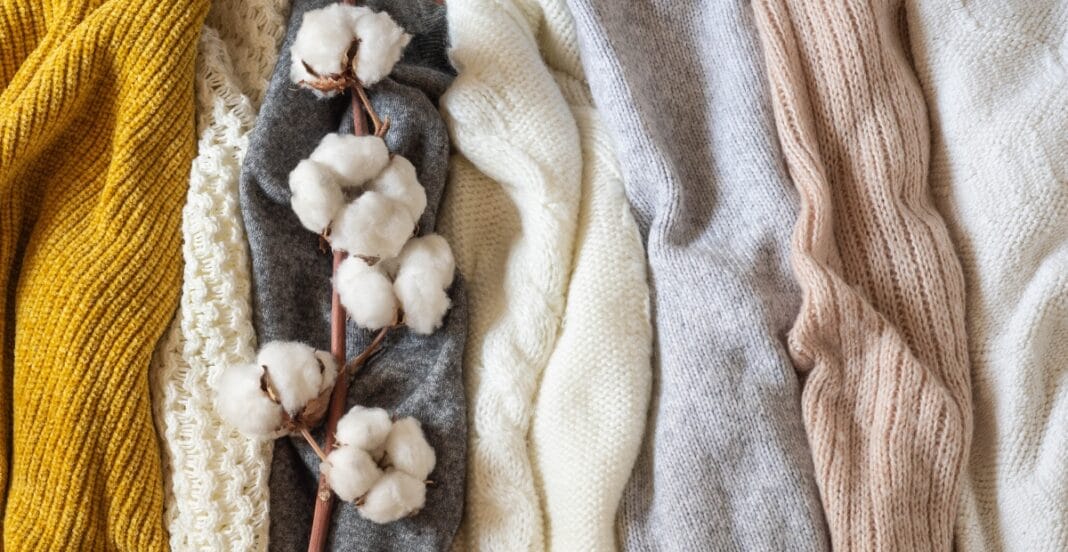Embrace Natural Textiles for a Greener Future
Natural Textiles do more than drape the body-they signal a mindful way of living. Increasingly, shoppers seek garments produced with genuine care. Modern waste-aware consumers want their wardrobe choices to echo their environmental principles. Natural fibres such as cotton, linen and hemp answer that call effortlessly. They combine attractive design, earth-friendly production and an inviting touch. Because these fibres break down harmlessly in soil, they lessen the burden of landfill. For that reason, advocates say clothes made from natural materials point toward a brighter fashion future.
Table of contents
- Embrace Natural Textiles for a Greener Future
- Why Natural Fabrics Matter More Than Ever
- Natural Fabrics and the Art of Sustainable Fashion
- The Unique Beauty of Natural Textiles
- Natural Textiles: A Versatile Wardrobe Essential
- How Natural Textiles Support Healthier Living
- Eco-Friendly Production of Natural Textiles
- Natural Textiles in Home and Lifestyle Products
- Fashion Trends Embracing Natural Textiles
- Caring for Natural Textiles the Right Way
- Natural Textiles Empower Local Artisans
- The Science Behind Natural Textiles
- Natural Textiles and Conscious Consumerism
- The Economic Power of Natural Textiles
- Global Impact of Natural Textiles
- Debunking Myths About Natural Textiles
- Styling Tips with Natural Textiles
- Building a Capsule Wardrobe with Natural Textiles
- FAQs
Why Natural Fabrics Matter More Than Ever
Each time a person shops, the planet feels the weight of the decision. One simple switch-cotton, hemp or linen instead of nylon or acrylic-sends a clear signal. Unlike petroleum-based synthetics, plant-based textiles come from renewable crops that can be replanted annually. When their useful life ends, these fibres biodegrade more quickly, returning nutrients to the soil. Over time, that natural cycle slows the build-up of lasting waste. Choosing such materials shows a commitment to long-term progress rather than short-term gain. Beyond ethics, these fabrics add character and durability to everyday outfits.
Natural Fabrics and the Art of Sustainable Fashion
Natural fibres now sit at the helm of the sustainable fashion movement. Designers and labels alike place them front and centre in updated collections. Many have swapped polyester for organic cotton or turned to hemp for its rugged versatility. The result is clothing that feels luxurious while respecting the people who grow and weave it. With each piece, a classic silhouette also carries a conscious purpose. Clearly, shoppers who embrace this approach find beauty entwined with responsibility.
The Unique Beauty of Natural Textiles
Natural textiles carry a charm that synthetic materials simply cant match. Linen breathes, softens, and gains character with each wear. Its wrinkles settle into the fabric like small, elegant creases of poetry. Wool and cotton, too, develop a lived-in feel that grows ever more inviting. These fibers touch the skin in a way that feels genuinely luxurious. Because they rely on natural dyes and gentle finishing, the body remains free of irritants. Wear them, then, and you bring together beauty, comfort, and safety.
Natural Textiles: A Versatile Wardrobe Essential
A wardrobe built on natural fabrics adapts to any occasion. Whether you slip on a crisp cotton shirt or an airy linen dress, the result feels effortless. With the right layering, a lightweight wool cardigan carries you from summer evenings to winter mornings. Because these fibers manage moisture and air flow, your temperature stays surprisingly steady. On a muggy afternoon, cotton wicks sweat; on a chilly night, linen holds in just enough heat. Their remarkable durability means quick turnarounds through laundry, yet the fibers resist tearing and fading. You can reach for them every day without fear of style or quality wearing out.
How Natural Textiles Support Healthier Living
Skin absorbs what touches it, so the fabrics closest to the body matter greatly. Most natural textiles skip the harsh dyes and heavy chemicals found in some synthetics. Soft indigo, plant-based tannins, or plain water finishes leave only gentle residues. Because of this, allergic reactions and rashes become far less likely. Better breathability works hand in hand with the clean composition. Open fibers transport moisture away from the skin and allow fresh air in, limiting that uncomfortable sweat film. Wearing these textiles, you support your health quietly while looking effortlessly stylish.
Eco-Friendly Production of Natural Textiles
Natural fabrics back up ethical farming and fair production. Farmers often grow organic cotton with neither pesticides nor synthetic fertilizer. The process consumes less water, energy, and land. Consequently, soil stays cleaner, wildlife flourishes, and runoff shrinks. These materials sponsor responsible supply chains and put money directly into local hands.
Natural Textiles in Home and Lifestyle Products
Natural textiles reach far beyond shirts and skirts. They dress mattresses, curtains, rugs, and even wall coverings. Their simple look works with every style, from modern to rustic. Beyond appearance, cotton, linen, or wool breathes, absorbs moisture, and softens over time. Unlike synthetic options, natural fibers settle dust instead of releasing toxic gases. Choosing them gives any space warmth without hidden chemicals.
Fashion Trends Embracing Natural Textiles
Natural textiles now steer mainstream fashion. Designers spotlight organic lines and limited runs. Influencers praise slow fashion while sharing earth-toned outfits. Sales data proves shoppers prefer garments that respect people and land. Loose cuts, raw weaves, and comfort-first silhouettes echo this new ideal. Clearly, style and sustainability can walk side by side.
Caring for Natural Textiles the Right Way
Looking after cotton, linen, or hemp is surprisingly simple. Begin by washing with a mild detergent made for delicate fabrics. Use cool or lukewarm water and never spin-dry until brittle. Whenever possible, hang the item in the shade and let it breathe. This habit protects color, shape, and last-season texture alike. With care, natural cloth seems to grow softer and richer over time. Unlike many plastics, it ages like well-loved leather. By following these few steps, you keep each piece beautiful and durable for years.
Natural Textiles Empower Local Artisans
When you choose a handwoven blanket or a pair of dyed hemp shoes, you support age-old craft. In many rural communities, livelihoods still hinge on spinning, weaving, or dyeing with local plants. Every sale helps young artisans pay school fees, feed families, and protect local traditions from fading. Handcrafted textiles carry the rhythms of village life and the stories of grandparents tucked into every seam. Buying them is an act of solidarity that honors skill rather than mass production. It preserves ancient know-how while giving modern wardrobes a distinct charm. Supporting these makers means noticing and valuing every single thread they place in your hands.
The Science Behind Natural Textiles
Beneath their rustic charm, natural fibers demonstrate clever design straight from nature. Cotton strands twist together to create softness and cushion against skin. Linen, made from long flax stems, channels air like a gentle breeze on hot days. Hemp, tougher than steel on microscopic tests, repels pests and toughens with every wash. Best of all, at the end of its life, each fiber breaks down harmlessly in soil or compost. Such traits match the ideals of a circular economy and calm modern sustainability goals. For years scientists have confirmed what artisans and grandmothers always knew-nature weaves the best fabric.
Natural Textiles and Conscious Consumerism
Today shoppers pause before they click or swipe. That small moment gives room for a bigger idea. Natural fabrics speak directly to people who want purpose. Conscious consumerism grows quickly around the globe. Many choose fewer items but of better quality. In that light, linen, hemp, and organic cotton fit perfectly. They promise craftsmanship, ethics, and a style that outlasts trends. So selecting these goods becomes a vote for a kinder market.
The Economic Power of Natural Textiles
Buying natural cloth fuels green economies. Purpose-driven brands respond by opening new workrooms. Organic farms ask for careful hands and skilled eyes. At the same time, eco-fashion insists on clear supply chains. That demand pushes companies to exchange bulk shortcuts for real value. Jobs shift from endless factories to small workshops and fields. In turn, growth stays ethical and communities gain strength.
Global Impact of Natural Textiles
Natural textiles reach far beyond a single closet. They shape trade routes and farming practices alike. Now nations encourage organic plots where soil and workers thrive. New policies reward makers who use low-impact materials. Seeing this gain, leaders from varied climates share methods. Fair wages and respect cross borders sewn into every yard. When fashion turns back to nature, the whole world stands to win.
Debunking Myths About Natural Textiles
Many people mistakenly think natural fabrics are dull and unimaginative. In reality, these materials offer a wide range of textures and design options. Others assume they are always pricier than synthetics. Yet because natural fibers tend to last longer, their overall cost can be lower. Advances in processing also mean they can be softer, stronger, and easier to care for than before. Given these facts, the old myths about natural textiles simply do not hold up any more.
Styling Tips with Natural Textiles
You can build countless outfits using only natural textiles. Start by layering a lightweight cotton tee with a rugged hemp belt or bag. For a more casual vibe, match breathable linen pants with dark denim or a chambray shirt. Earthy greens, creams, and rusty browns tie everything together without feeling forced. The versatility of natural fabrics comfortably bridges minimal and statement styles. Above all, each piece speaks to your commitment to sustainable living while letting your personality shine.
Building a Capsule Wardrobe with Natural Textiles
The capsule wardrobe fad is still going strong, and natural fibers fit right in. Choose durable basics like a crisp white cotton button-up or relaxed linen trousers to start. Add a soft cashmere or recycled wool cardigan and a few simple scarves for extra warmth and wind resistance. With just a dozen well-made items, you can mix and match outfits for weeks on end. This approach not only cuts down on clutter; it also sharpens your personal style by letting signature pieces take center stage.
Natural fibres fit neatly into a zero-waste lifestyle. When you buy biodegradable clothing, you cut landfill overflow. Many eco-friendly textiles also come from low- or no-waste production lines. They pair well with recycling and upcycling initiatives. In short, such fabrics lighten the heavy footprint of fast fashion. Choosing them lets you shop intentionally while shrinking your impact.
Natural fibres will also steer tomorrows clothing industry. By blending old know-how with new tech, makers keep inventing softer, stronger materials. Banana fibre, nettle cloth and bamboo twill are already entering mainstream boutiques. 3D knitting with organic yarn saves scraps and cuts energy use. Clearly, these innovations mean natural textiles will continue to grow. Nature and technology together promise a wide range of fresh options.
FAQs
Natural textiles are fabrics made from plant or animal sources such as cotton, hemp, wool, linen, and silk. They are biodegradable, renewable, and more sustainable than synthetic alternatives.
Natural textiles are breathable, hypoallergenic, and eco-friendly. They decompose naturally, reduce skin irritation, and support sustainable farming practices.
Yes, natural textiles like linen, wool, and cotton adapt well to seasonal changes. They offer insulation during winter and breathability in summer.
Absolutely. In fact, many natural textiles become softer and more comfortable with time, maintaining durability and charm.


